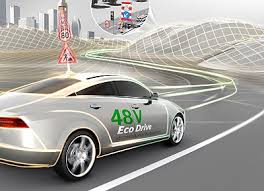
FISITA, the international membership organisation for the automotive and mobility engineering profession, is embracing the concept of Mobility-as-a-Service (MaaS) through a new Strategic Partnership with the MaaS Alliance.
Jacob Bangsgaard, President of the MaaS Alliance, said: “Our partnership with FISITA will be an invaluable asset as we strive to bring together the Mobility as a Service ecosystem. Private-use cars have long been the backbone of modern mobility. However, the recent growth of personalised mobility service options is challenging that status quo. Owning a car is no longer a must-have lifestyle choice.”
“We look forward to connecting with FISITA’s members to profile Mobility as a Service opportunities, such as new sales channels, access to untapped customer demand, advanced user account and payment management, as well as more robust data on travel demand patterns and dynamics.”
Kelly Williams, Director of Member Services at FISITA, said: “We welcome the MaaS Alliance as a Strategic Partner to FISITA, which will help foster greater inclusivity and collaboration across our sector. Over the last 6 months, our Industry Committee has been developing a mobility ecosystem map, which aligns perfectly with the partnership. As the mobility sector evolves, we are taking exciting steps into the next chapter of FISITA’s journey.”
Established in 2015 at the ITS World Congress in Bordeaux, the MaaS Alliance <https://maas-alliance.eu/> is a public-private partnership of 40 member organisations, creating the foundations for a common approach to MaaS. The Alliance’s main objective is to facilitate a single, open market and full deployment of MaaS services in Europe and beyond.
Mobility as a Service (MaaS) is the integration of various forms of transport services into a single mobility service accessible on demand. The Mobility as a Service ecosystem includes services such as WhimApp <https://whimapp.com/> (by MaaS Global), currently available in Helsinki and trialled in parts of the UK; Ubeeqo <https://www.ubeeqo.com/en> , the car-sharing app already operating in major European cities such as London, Paris and Berlin; and, GoMore <https://gomore.com/> , the one-stop car-sharing solution covering Denmark, France, Norway, Spain and Sweden.
FISITA offers exclusive membership to global engineering societies and corporate organisations active within the mobility systems engineering industry. They can access a range of international technical events, knowledge sharing, committee activities and technical networking opportunities. For more information about joining FISITA see:www.fisita.com/join
About FISITA
FISITA is the international membership organisation that supports the automotive and mobility systems sector in its quest to advance technological development. Having delivered against this mission for every generation of engineers since 1948, we are uniquely placed to promote excellence in mobility engineering and the development of safe, sustainable and affordable mobility solutions.
Since creation, FISITA has seen significant growth in influence and relevance. Today our network of Member Societies and Corporate Members extend a reach to over 210,000 engineers in 37 countries, placing us at the heart of the industry and enabling members to connect with each other, network, share technological advancements and collaborate in a pre-competitive environment.
FISITA facilitates dialogue between engineers and industry, governments, academia, and environmental and standards organisations, across all areas of automotive and mobility systems technology. Achieved through organising and delivering internationally-acclaimed technical events, including the World Automotive Congress, the World Automotive Summit, the newly-created FISITA PLUS conference and EuroBrake, the world’s largest braking technology conference; as well as endorsing the significant events run by our Member Societies.
The FISITA Roadmap to 2020 strategic engagement plans see our organisation’s continued investment in the next generation of engineers through the ‘Your Future in Automotive’ initiative, the long-term ‘Engineer 2030’ project and ‘International Work Experience Programme’, while our recently formed Industry Committee is pioneering our strategic tracking of the evolving mobility sector through the FISITA Eco-System mapping project – ensuring that our organisation continues to deliver leadership and a relevant community to this and future generations of engineers. Engineers create solutions, FISITA continues to support them to do so.
About MaaS Alliance
Established at the ITS World Congress in Bordeaux in 2015, the MaaS Alliance is a public-private partnership working to establish foundations for a common approach to MaaS, and to unlock the economies of scale needed for successful implementation and uptake of MaaS in Europe and beyond. The main goal of the Alliance is to facilitate a single, open market and full deployment of MaaS services.
There are various stakeholders whose committed participation in the development and implementation of MaaS is crucial to its success. The MaaS Alliance facilitates stakeholder cooperation through a shared work programme engaging all relevant stakeholders, inter alia the following:
* Transport service providers and public transport operators
* MaaS operators and integrators
* IT system providers
* Customers
* Cities, local, regional and national authorities
MaaS Alliance members from all sectors collaborate to create the enablers needed for successful deployment of MaaS in Europe and beyond. The Alliance contributes to European policy-making, promotes the added value of MaaS to local government and business, monitors the MaaS market and facilitates the dialogue with the research community. Finally, the Alliance is the voice of the MaaS community for awareness and advocacy.















More Stories
Mosaic Click board from MIKROE delivers global coverage multi-band and multi-constellation tracking ability
Current transducer from Danisense selected for DC charging station testing device demonstrator at TU Graz
New Click board from MIKROE helps develop and train ML models for vibration analysis